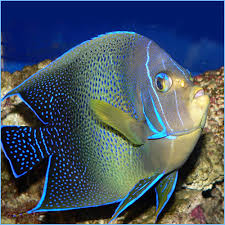Dragons and Their Connection with Other Mythical Creatures in Chinese Culture

Dragons hold a special place in Chinese culture, often seen as symbols of power, strength, good fortune, and wisdom. For thousands of years, the Chinese dragon has been an iconic creature, central to myths, legends, and cultural traditions. However, the dragon is not alone in its prominence in Chinese mythology. It exists within a vast network of mythical creatures, each with its own symbolism and significance, yet often intertwined with the dragon in ways that reflect the deep spirituality, cosmology, and values of Chinese civilization.
From the majestic phoenix to the fierce tiger and the mystical qilin, many creatures in Chinese mythology share symbolic connections with the dragon, each representing different aspects of life and the universe. These relationships are not just casual pairings; they are deeply rooted in the philosophical and cosmological systems that shape Chinese culture, particularly the concept of Yin and Yang, the Five Elements, and the role of harmony in the natural world.
In this article, we will explore the connections between the Chinese dragon and other mythical creatures in Chinese culture. We will examine the roles of these creatures in Chinese legends, how they complement and balance each other, and what their interactions reveal about Chinese views on harmony, power, and the spiritual realm.
1. The Chinese Dragon: A Symbol of Power and Harmony
Before diving into the relationships between the dragon and other mythical creatures, it is essential to understand the symbolic significance of the dragon in Chinese culture. The Chinese dragon is vastly different from the fire-breathing, destructive dragons often depicted in Western mythology. Instead, the Chinese dragon is a benevolent, auspicious creature, embodying the forces of nature, cosmic power, and imperial authority.
In Chinese cosmology, the dragon represents the Yang energy — the active, male, and cosmic forces of the universe. The dragon’s connection to water, rain, and fertility also links it to the life-giving elements of nature, making it an essential force in the agricultural society of ancient China. Furthermore, the dragon was associated with the Emperor, symbolizing the ruler’s divine right to govern and his connection to heaven and the natural world.
The Chinese dragon is often depicted as a long, serpentine creature with antler-like horns, sharp claws, and a fearsome head. It is said to control the elements, particularly water, and is believed to bring good fortune, prosperity, and peace to those who honor it. This positive and benevolent nature of the dragon makes it a vital component of Chinese cultural traditions, often seen as a protector and a bringer of blessings.
2. The Phoenix: The Yin to the Dragon’s Yang
One of the most significant mythical creatures in Chinese culture that shares a symbolic relationship with the dragon is the phoenix, known as the fenghuang in Chinese. While the dragon embodies the Yang energy, the phoenix represents the Yin energy — the passive, feminine, and nurturing forces of the universe. This duality of Yin and Yang is a central concept in Chinese philosophy and cosmology.
The phoenix, often depicted as a colorful, radiant bird, symbolizes renewal, transformation, and immortality. It is said to bring peace and prosperity and is often associated with the Empress, complementing the dragon, which is symbolic of the Emperor. In Chinese art, the dragon and phoenix are frequently depicted together, symbolizing harmony between the masculine and feminine, the ruler and the ruled, and the active and passive forces of the universe.
In many Chinese myths, the dragon and the phoenix are seen as partners, balancing each other’s energies and creating harmony in the natural world. Their union is often interpreted as a symbol of perfect balance and unity, with the dragon providing the strength and power of Yang, while the phoenix offers the grace and wisdom of Yin.
3. The Qilin: The Protector of Harmony and Prosperity
The qilin is another mythical creature closely associated with the dragon in Chinese culture. Often described as a chimerical beast, the qilin has the body of a deer, the hooves of a horse, the tail of an ox, and the mane of a lion. It is often depicted with a dragon-like head, and its appearance is associated with the arrival of a sage or a wise ruler.
The qilin is seen as a benevolent creature, symbolizing prosperity, good fortune, and the protection of peace. It is often portrayed as a peaceful and harmonious creature, wandering through forests and fields without harming anything in its path. In Chinese mythology, the qilin is believed to appear only during times of peace and harmony, often foreshadowing the birth of great leaders or the arrival of wise sages.
The connection between the dragon and the qilin can be understood through the shared symbolism of peace, harmony, and prosperity. Both creatures are seen as protectors of the natural world and are associated with divine authority. In some legends, the dragon and qilin work together to ensure the balance of nature and to protect the people from chaos and disorder. The qilin’s presence in these stories often highlights the dragon’s role as a force of protection, ensuring that harmony prevails in the universe.
4. The Tiger: The Counterbalance to the Dragon’s Ferocity
While the dragon is typically viewed as a symbol of power and benevolence, the tiger is its fierce counterpart in Chinese mythology. The tiger represents strength, courage, and aggression, but also the dangers of unchecked power. In some legends, the dragon and the tiger are depicted as rivals, representing the ongoing battle between Yin and Yang, light and dark, and order and chaos.
The tiger, known as the “King of Beasts” in Chinese culture, is often seen as a guardian spirit, protecting against evil spirits and misfortune. However, the tiger’s role in Chinese mythology is not just that of a protector. It is also a reminder of the destructive forces of nature and the importance of balance. Where the dragon brings harmony and fortune, the tiger represents the wild and untamed side of the world.
Despite their contrasting natures, the dragon and the tiger are often shown together in Chinese art, signifying the balance between opposing forces. This pairing is especially significant in Feng Shui, where the dragon and tiger are placed in specific positions to harness their complementary energies, bringing about both protection and prosperity.
5. The Snake: The Serpentine Kinship with the Dragon
The snake is another mythical creature that shares a strong kinship with the dragon in Chinese culture. In fact, the dragon is often described as having a serpentine body, and many dragon legends involve creatures resembling giant snakes or serpents. The snake, like the dragon, is associated with transformation and renewal. In Chinese astrology, the snake is one of the twelve zodiac animals, symbolizing wisdom, grace, and subtlety.
In some myths, the snake and the dragon are considered manifestations of the same entity, with the snake being the more grounded, earthly counterpart to the dragon’s celestial nature. The snake is often seen as a symbol of danger and temptation, but also of resilience and survival. Its relationship with the dragon highlights the interplay between the physical world and the spiritual, with the snake representing the earthly realm and the dragon embodying the celestial.
6. The Tortoise: A Connection to Longevity and Immortality
The tortoise, or guibing, is one of the Four Auspicious Animals in Chinese mythology, alongside the dragon, phoenix, and qilin. The tortoise is a symbol of longevity, stability, and wisdom. Its connection to the dragon is often seen in the context of the creature’s role as a guardian of time and space.
In some Chinese myths, the tortoise is depicted as carrying the world on its back, symbolizing endurance and the passage of time. The dragon and the tortoise share a relationship of mutual respect, with the dragon representing the active forces of change and the tortoise embodying the steady, unyielding forces of stability and longevity. Together, these creatures reflect the cyclical nature of life, with the dragon bringing dynamic energy and the tortoise offering the wisdom and stability necessary to preserve that energy over time.
7. Conclusion: The Dragon and Its Mythical Kin in Chinese Culture
In Chinese culture, the dragon is not a solitary figure but a central character in a rich tapestry of mythical creatures, each playing a vital role in maintaining balance, harmony, and prosperity in the world. From the yin-yang relationship with the phoenix to the protective nature of the qilin and the fierce rivalry with the tiger, the dragon’s connections to other mythical beings reflect the Chinese worldview of interconnectedness and balance.
These creatures, despite their different characteristics, work together to maintain the cosmic order, ensuring that both power and wisdom, strength and grace, are present in the world. Through their relationships, we gain a deeper understanding of the philosophical, spiritual, and cultural values that have shaped Chinese civilization for millennia.
The dragon, as the most powerful and revered of these creatures, serves as a reminder of the forces of nature, the divine, and the human spirit. Its connection with other mythical creatures in Chinese mythology illustrates the importance of balance and harmony, themes that continue to resonate in Chinese culture to this day.

